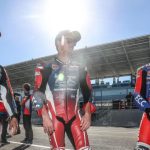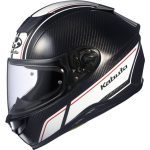Today's motorcycles are great, but there were many great and fun motorcycles in the past. I'd like to take a look back at some of the motorcycles that I wish were around today, based on my own experiences. Let's take a look at the Honda VF750F.
Descendant of the NR500 that challenged the WGP with a 4-stroke engine
At the end of the 1970s, Honda's secret weapon in its bid to return to the WGP was the NR500. The story of Honda's challenge with the unprecedented 32-valve, elliptical-piston, V-4 super engine is so famous that it has been called "the best of the best".
Although it failed to make it big in the WGP, the VF series was developed by feeding back the know-how gained from the ultimate V4 engine, which demonstrated Honda's technological prowess, to production motorcycles.
The V4 that foreshadowed a new era
The VF750F debuted in 1982. In the spring of that year, the VT250F, which had been designed to defeat the RZ250, was released first as a V-twin sport bike and became an explosive hit.
VF400F
On an unforgettable blue-sky day, the VF400F and VF750F, equipped with the world's first liquid-cooled V4 DOHC 16-valve high-mechanical system, were launched simultaneously, and the sound of the V4 instantly filled the streets.
VF750F
The advanced form of the V4, with its slim body and half cowl, symbolized the arrival of a new era, and the boys were thrilled by the latest equipment derived from GP racers, such as the 16-inch front boomerang ComStar wheels and square section pipe frame.
That Spencer also won a lot of VF.
It was the VF750F that I particularly admired. The VF750F's modern red and black paint scheme and golden wheels were particularly dazzling.
Freddie Spencer won the National Superbike Championship three times in a row from 1983, riding a VF750F-based factory racer VF750R (better known as "Interceptor" in the US). Incidentally, Freddie's partner until the previous year was the famous Spencer replica CB750F.
It was inhabited by the sensibility of a new age.
Even at the time, the VF750F cost 750,000 yen, which was more than 200,000 yen more than the CB750F, and I couldn't afford it as I was working part-time. However, I often heard about its high performance, such as "even the RZ350, which was feared as a Nanahan killer, was beaten on the mountain passes.
Some years later, when my interest was shifting from motorcycles to cars, it was a VF750F that caught my eye on a street corner. I remember renting a red-and-black VF750F from one of the few rental shops specializing in large motorcycles in Tokyo at the time, and taking a day off from work to go touring in the Shonan area.
The first time I rode the V4, the ride was smooth and luxurious, with more torque than the CB750F, and when I opened the throttle, the V4's distinctive muffled pulse gave way to explosive acceleration. On the mountain passes, the lightness of the CB750F and the tricky 16-inch front-end turns were a bit disconcerting, but we were impressed by the turning power that the CB couldn't match. Everything was different from the conventional motorcycles, and it had the sensitivity of the new age.
I want the world to see the excellence of the V4 again.
The VF750F may not have been a huge hit, partly because it was a Nanahan. However, its successor, the VFR750F, continued to serve as the official motorcycle for many years, and its DNA was passed on to the VFR750R (RC30) and then the RVF (RC45), which were unbeatable in the Superbike World Championship and Suzuka 8 Hours, and established a new era.
And the fact that most of the current MotoGP machines, including the RC213V, use the V4 engine speaks eloquently of the superiority of the layout.
When I think about it, I hope that one day there will be another supersport with the latest V4 unit.
See HONDA Moto Index Page
See Accessories for HONDA VF750F Interceptor






